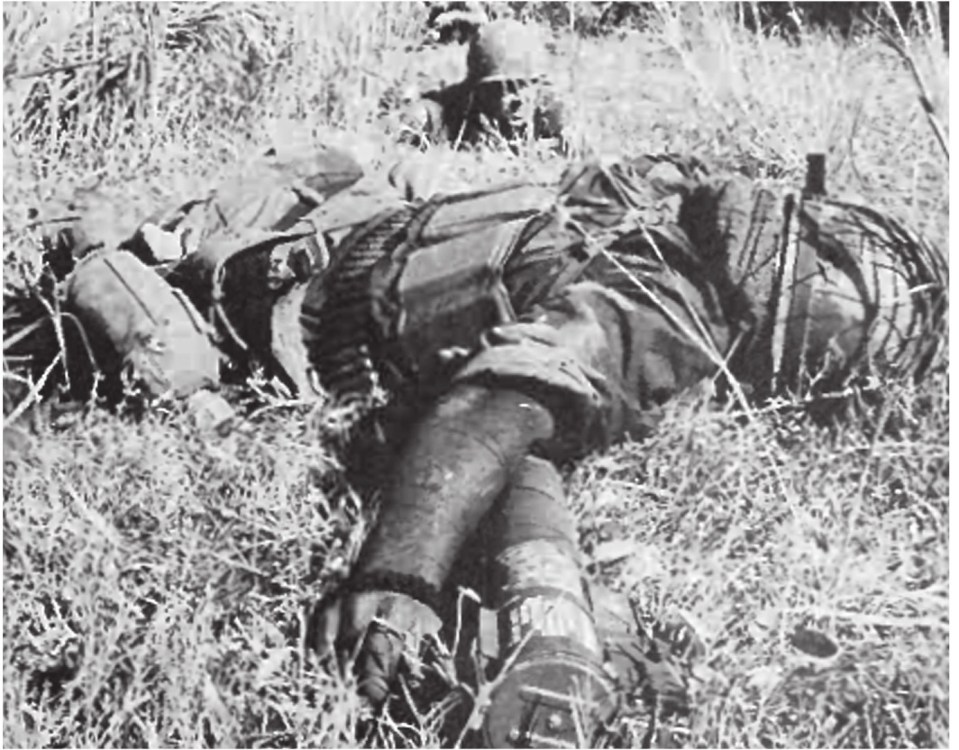New collection of Vietnam War images that pressured politicians to end the brutal conflict

A NEW collection of photos reveal the brutal reality of the Vietnam War - which even left experienced photographers traumatised.
Graphic pictures snapped of atrocious war crimes by US soldiers and demoralising images depicting the grim reality of the battlefield provoked the end of the conflict, say tormented US forces photographers who captured them.
Distressing photos from the infamous war, which directly involved American troops between 1964 and 1973, include a group of terrified Vietnamese men, women, and children just seconds before they were mown down by US soldiers.
An elderly woman can be seen picking through the remains of her charred home, razed to the ground in the war.
And three US troopers cleared a “cave of Viet Cong fighters” moments before they were injured by a grenade after an initial “surrender”.
The gruesome shots are included in Dan Brookes and Bob Hillerby’s new book “Shooting Vietnam: Reflections on the War by Its Military Photographers”.
Described as a disturbing collection of first-hand accounts, it’s written by military combat photographers and photo lab personnel (“lab rats”) who documented the war and the country, on and away from the battlefields.
Supposedly a tool for publicity relations, photographers in Vietnam were originally given carte blanche to photograph what they wanted. The results were rarely positive for the US government.
Brookes said: “Vietnam was the most photographed war in history and will probably never relinquish that distinction.
“Between civilian and military photographers, millions of photographs and miles of film footage were taken.
“The [US] government and military wanted to document the war, bolster home support, and propagandise the noble effort it was making in the name of stopping communism in its tracks in southeast Asia. What better tool than the camera?
“It failed, in both its public relations effort and the war itself. Instead, the camera helped kill the war.
“The images of the war that became icons of the horror and brutality that was Vietnam fuelled an unstoppable anti-war movement.
“Instead of rallying the public to support the noble effort, it turned them against it.
“In Vietnam, truth finally triumphed over propaganda.”
One particularly horrifying image captures the terror in the faces of civilians, seconds before they were brutally murdered.
The heart-wrenching photo, which eventually saw far tighter restrictions placed on US military photographers, was taken by Army combat photographer Ronald Haeberle in 1968.
He came upon the women and children, surrounded by some GIs.
One woman was trying to button up her blouse after one of the soldiers had tried to rip it off. As he raised his Nikon, a GI shouted, “Whoa, whoa!”
But Haeberle took the photo, turned around and started to walk away.
“All of a sudden, ‘Bam, bam, bam, bam!’ and I look around and there’s all these people going down,” recalled Haeberle.
The sickened photographer handed the photos over to his superiors to ensure the men responsible were brought to justice.
The Vietnam War
Arguably the most controversial war in the United States’ history, Vietnam continues to spark fiery debate nearly 50 years after the US pulled its troops out of the south east Asian country.
Was it a country bravely standing up against the tyranny of communist oppression or was it reclusive superpower foisting its own philosophies on an aspiring country half a world away?
A Cold War battleground between the clashing ideologies of the USSR (communism) and America (capitalism), the war, from 1969-1973, was first and foremost between the communist north of Vietnam and the government of South Vietnam which saw millions of people slaughtered.
Estimates suggest two million civilians perished across the north and south, as well as 1.1 million Viet Cong/communists, approximately 250,000 South Vietnamese.
As a result of the conflict, 58,282 American soldiers died, and another 303,644 were wounded.



















